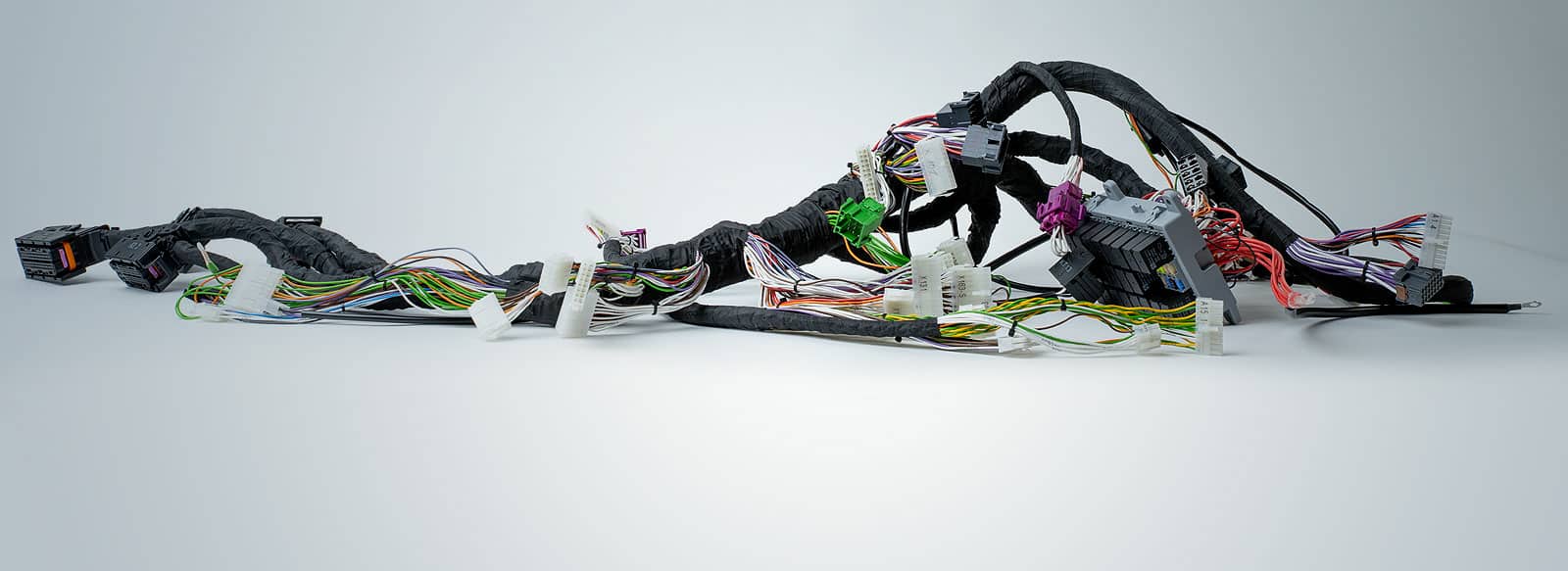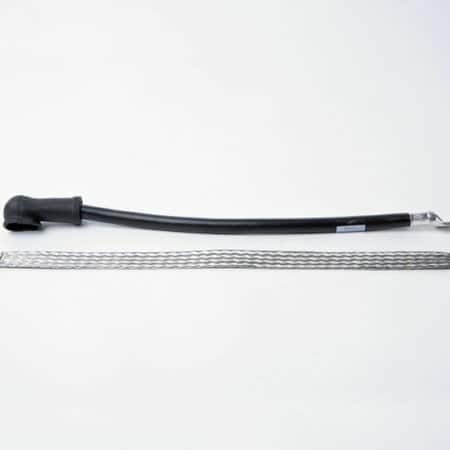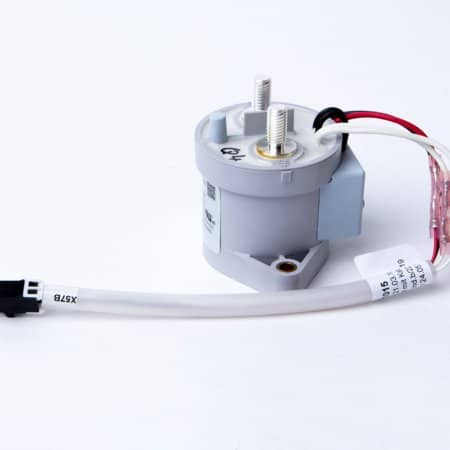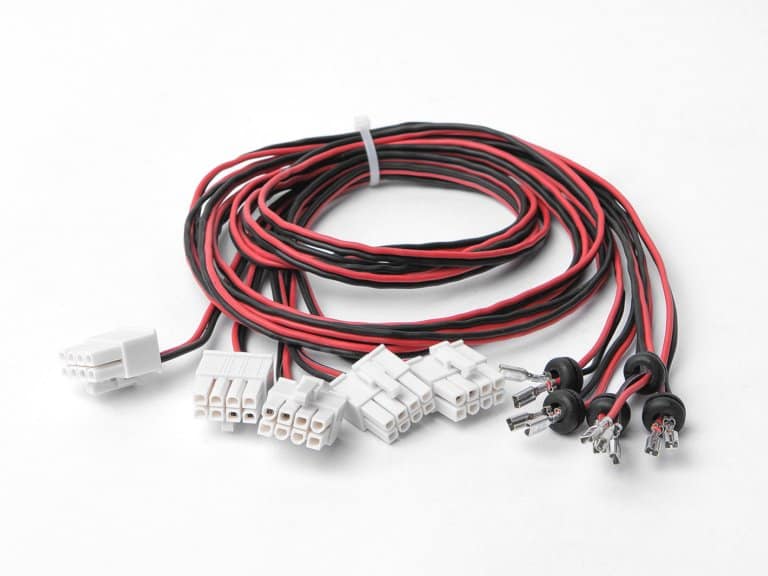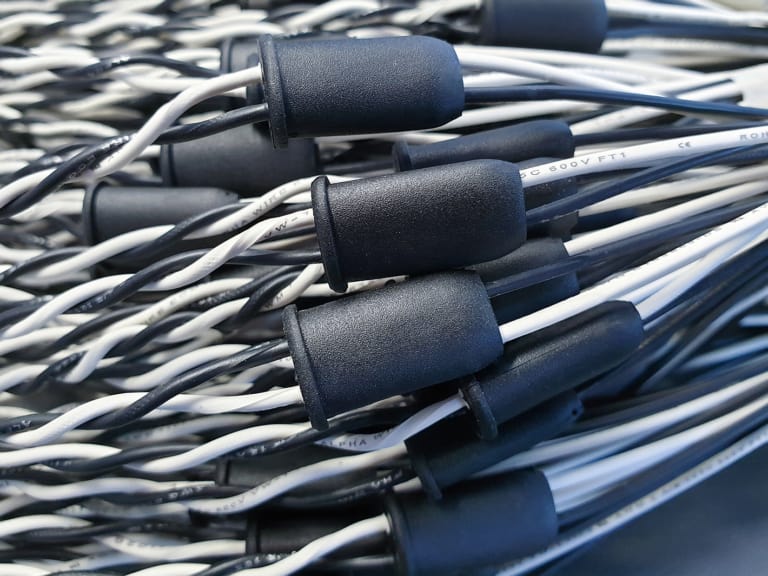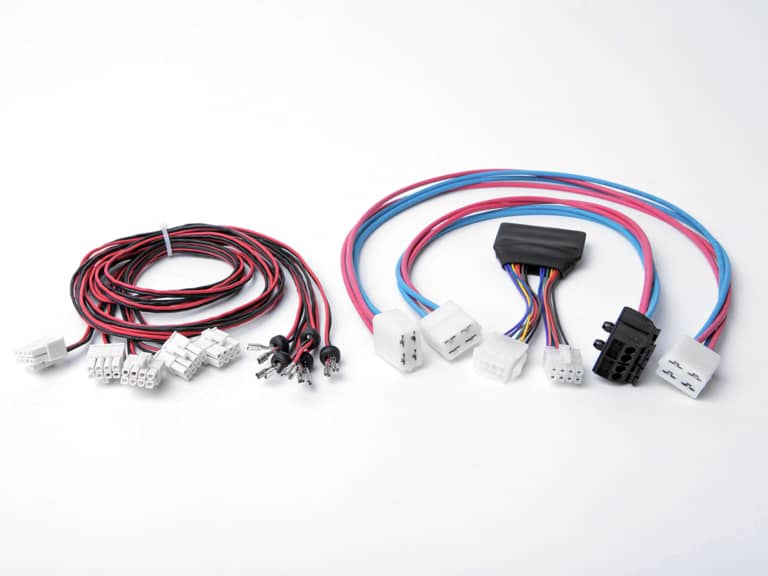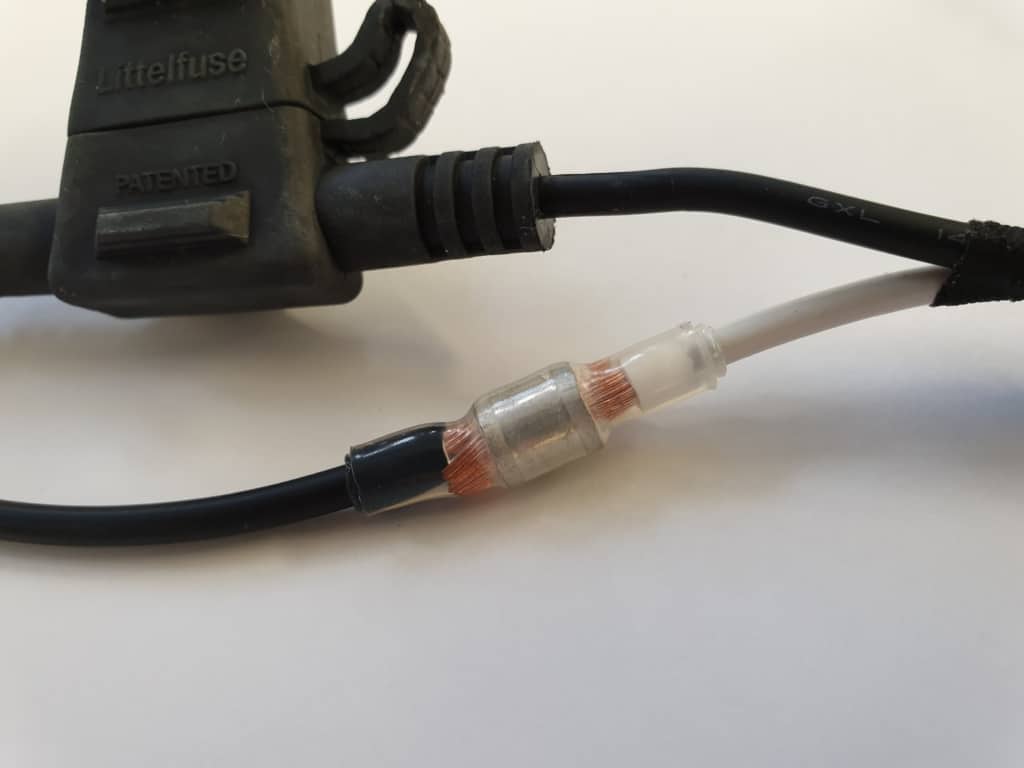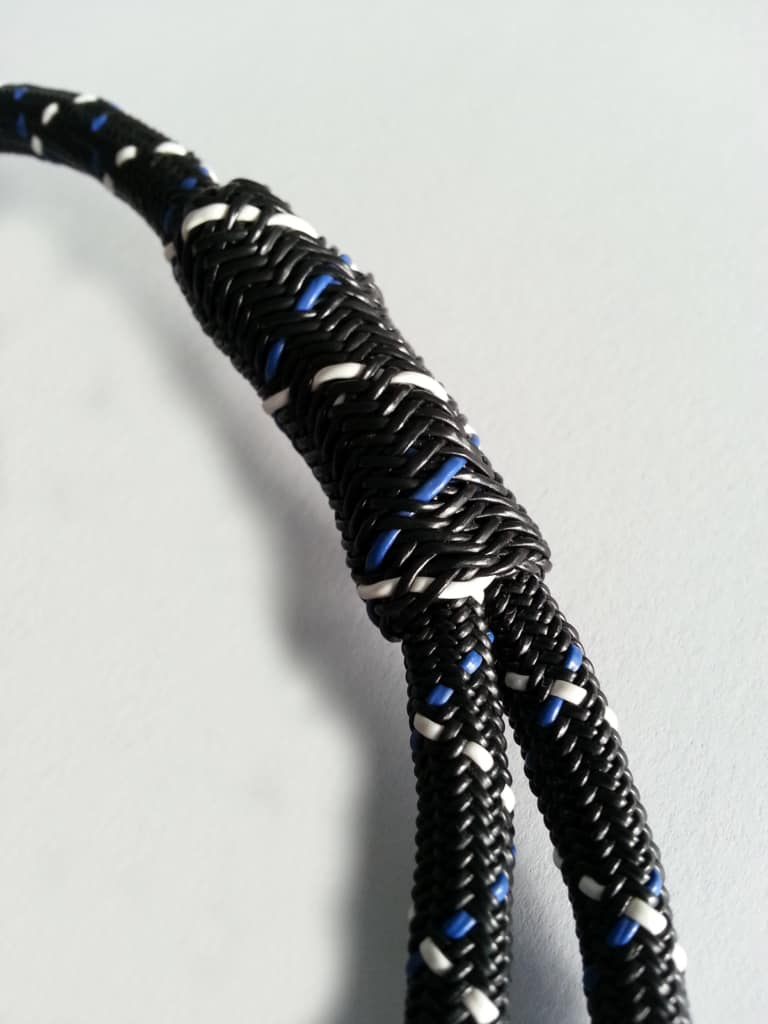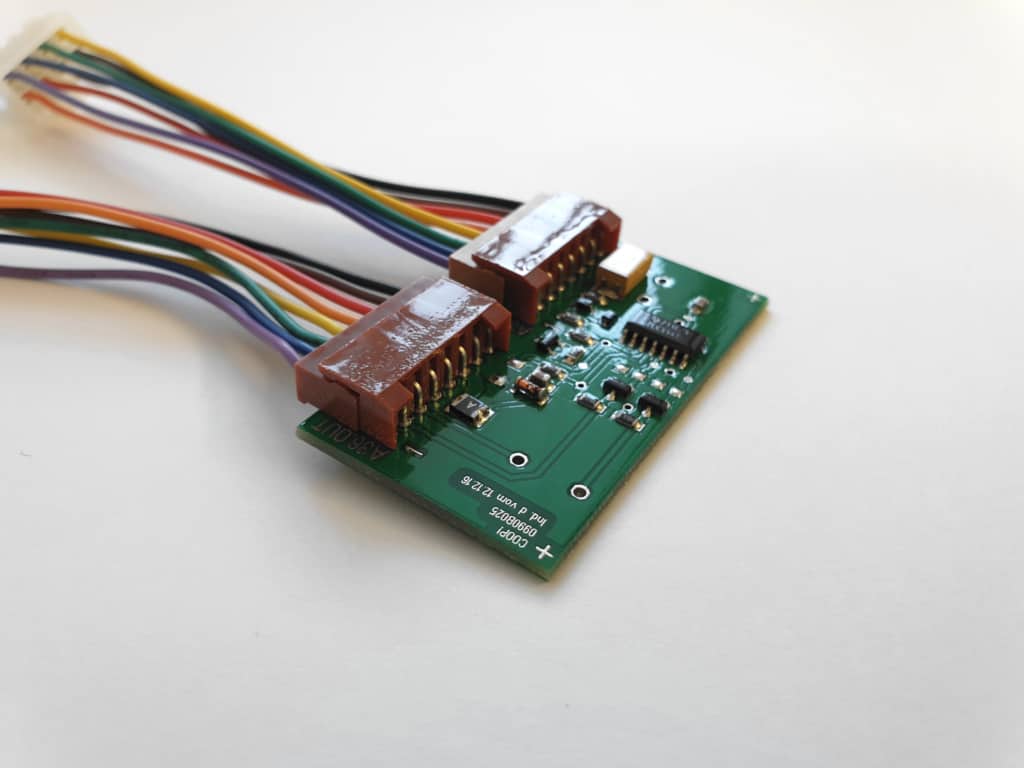When you request a cable harness from us, we do not only think of the material and production costs for the cable assembly, we also think of the components to be connected to it, the mountability, an economic production as well as a logistically reasonable processing.
Your competence center for cable assembly
Electrical cables in a wide range of variants guarantee that the most diverse processes function reliably at the push of a button. With COOP, you have a competent and experienced supplier at your side who can provide you with economical solutions for all aspects of cable assembly.
We develop and manufacture according to your wishes and requirements, from assembled individual cables, control cables and data cables to complex cable harnesses with several hundred cables, which are installed as modules of an on-board power supply system. Modern machines and long-standing employees guarantee constant quality in the production of cable harnesses.
Development and series production of wiring harnesses
In a cooperative partnership we support our customers from the development to the serial production of wire harnesses, no matter if for large or small series. We adapt to your needs.
Using the latest software, we can route cable harnesses through complete assemblies (e.g. vehicle cabins) and derive drawings. If no corresponding documentation and drawings are available, we create them ourselves, including material lists and connection lists. Depending on the cable harness and the project, we provide this service free of charge if there is a realistic chance of also receiving the series order.

Overview of Services Cable assembly
Wiring harness production – What we can do
Crimping
Crimping creates homogeneous and gas-tight electrical connections between crimp contact and conductor. We can crimp almost all cable cross-sections with and without seal and thus create a non-positive and secure connection. Process monitoring is documented by crimp height, pull-off force, crimp force monitoring and micrographs.
Soldering and tinning
The soldering and tinning of cable connections in circuit boards and printed circuit boards is either done with a wave soldering machine or manually. From classic manual soldering to beam and reflow soldering – our specially trained employees guarantee consistent quality.
Ultrasonic Welding
Resistance and ultrasonic welding can be used to create excellent electrical connections for e.g. high-voltage applications. In addition to thermal plastics, non-ferrous metals such as copper, brass and various alloys are also suitable for the ultrasonic welding process.
Splicing and Joining
Cable ends can be connected semi-automatically with parallel connectors, with splice tape or by ultrasonic welding. Splicing is the process of permanently connecting two or more electrical conductors. Different and identical types of conductors can be connected together. The stability of the connection can be checked by using the appropriate software.
Wrap, braid, bandage
Wire harnesses can be wrapped by hand, semi-automatically or with CNC winding machines. The braiding of wire harnesses with special nylon or metal yarns as mechanical protection also allows the use in particularly rough environments (e.g. at particularly high temperatures) under heavy stress. Additionally, disturbing noises (e.g. knocking and rattling) caused by vibrations can be avoided. During taping, the individual cables are bundled and connected ready for installation.
Twisting
In order to be able to transmit CAN bus signals without interference, for example, a process-safe twisting of the individual wires is necessary. With automatic twisting machines, predetermined lay lengths can be permanently maintained.
Insulation and cable protection
In addition to insulation, the protection of the cables against mechanical stress is also an important reason for the use of insulating sleeves (e.g. PVC, silicone, glass silk), shrink sleeves and corrugated pipes.
Overmoulding and Casting
The low-cost hot-melt process (low-pressure injection moulding) allows individual overmoulding of sensors, circuit boards, plugs and cables to protect against mechanical stress (e.g. bend protection, strain relief, etc.) and to seal electrical components. Usually, the components are overmoulded with a black thermoplastic elastomer (TPE) or polyamide (PA) or cast with resins. The tools required for this are usually made of inexpensive aluminium.
UL certified cable assembly
For more than 25 years we have been supplying national and international customers with wire harnesses and cable looms. As a specialist for customized cable assembly, we can of course also supply UL certified (Underwriter Laboratories Inc.) cable harnesses.
Printing and marking
For the marking of cable harnesses, cables, housings, connectors, hoses etc. we use either the inkjet or the pad printing process. Both methods mark directly and abrasion-resistant. In addition, there is also the possibility of attaching a label or an inscribed shrink sleeve for identification. The selection is made according to the quality requirements of the customer.
Labelling
In order to facilitate the assembly and disassembly of wire harnesses and wire harnesses, they can be marked with e.g. written flags, printed heat shrinkable sleeves, labels etc. Data codes and company logos can also be applied. Tested cables receive a label with article numbers, test date and lot number as standard to ensure easy traceability.
Mechanical and electronic controls
Supported by international partners in the field of electronic development, we design and manufacture control units and electronic control systems according to customer specifications. The assembled circuit boards can be mounted on cable sets in our component assembly department or incorporated into products. On request, the boards can also be potted to protect them from external influences.
Component assembly
We assemble and install electrical components as required in order to supply our customers with ready-to-install products and systems. This also includes customer-specific rubber grommets and other special parts made of plastic, rubber and metal, which we develop and manufacture ourselves. (read more)
Electrical final test
Before delivery, each cable harness is checked in a procedure individually agreed with the customer – by means of electrical, continuity, functional, visual, dimensional and geometric tests – for its electrical function, possible assembly errors and the presence of all components. All measurement results are recorded, documented and stored in an audit-proof manner in accordance with the applicable standards.
Processable cables
- Individual wires made of PVC, TPE, silicone etc.
- Sheathed cables made of PVC, PUR, silicone etc.
- Processing of all common cable cross sections
- Screened cables
- Ribbon cable
- Coaxial cable
- Data cable and signal cable (USB etc.)
- Halogen-free cables
- UL certified cables
- Customized special cables
- Control cables
- Motor cable
- Connection cable
- and many more
Use our all-round service
- Personal customer advice and support
- New development, further development, cost optimization
- Creation of concept drawings, production drawings and material lists (BOM)
- Fast prototyping
- Creation of initial sample inspection reports (ISR)
- Demand-oriented production
- International serial supply
- Computer-aided process documentation
- Batch Traceability
- Continuous quality monitoring
Any more questions?
We are happy to advise you and provide you with a non-binding offer.



